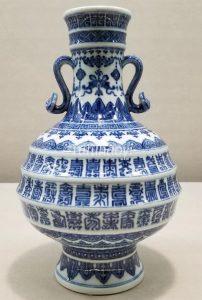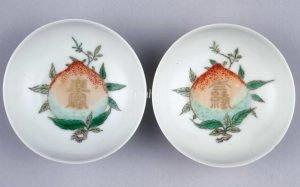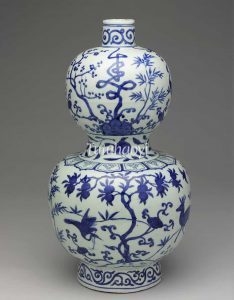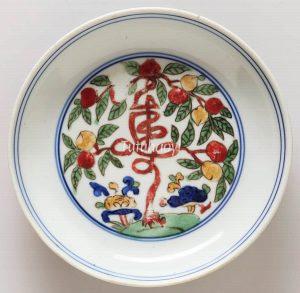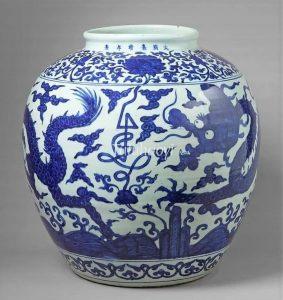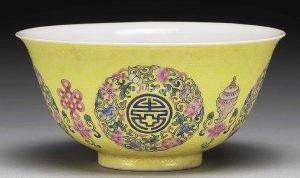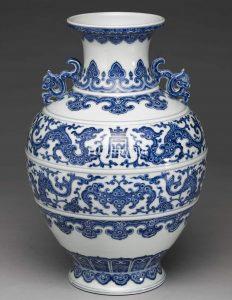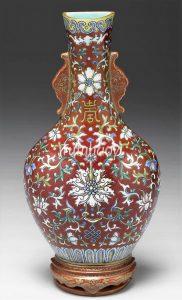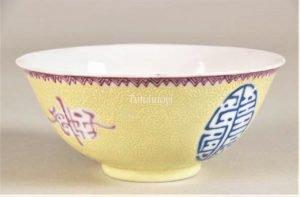Longevity
寿
© Tutuhaoyi.com owns the copyright of the description content for the images attached. Quoting all or part of the description content on this page is permitted ONLY IF ‘Tutuhaoyi.com’ is clearly acknowledged anywhere your quote is produced unless stated otherwise. (本页描述内容版权归Tutuhaoyi.com所有,转发或引用需注明 “Tutuhaoyi.com”, 侵权必究, 已注开源信息的条目除外。)
The Chinese deeply respect the elderly and consider a long existence – ideally accompanied by health and happiness – to be one of the five most important blessings (wufu 五福) in a person’s life, which were believed by the ancients and recorded in the Book of Documents 书经 in the Zhou Dynasty (c. 1046 – 256 BCE) more than two millennia ago. The other four are fu 富 (wealth), kangning 康寧 (wellbeing and peace), yuhaode 攸好德 (love of virtue), and kaozhongming 考終命 (natural death). The character shou 寿 for ‘longevity’, therefore, often appears on gifts and domestic decoration as an artistic design.
The earliest form of the character shou 寿 for ‘longevity’ is found on bronze vessels, which combines two main elements: a meaning radical and a phonetic radical. On the top and right-hand side is a form that resembles an old man with long hair leaning on a walking stick. Beneath that is a phonetic element sounding somewhat like ‘chou (畴)’, which is a character by itself that means ‘ploughed fields with ridge’.
As one of the five blessings, the ideal of ‘longevity’ permeates the whole realm of Chinese artistic creation. One format favoured by artists is to present numerous versions of the shou character on one piece of artwork, usually up to one hundred. People believe the repetition of the presentation of the concept would greatly increase its efficacy. The readers are welcome to explore the related fascinating symbols and designs with the help of our comprehensive search functions.
literature research by Dr Yibin Ni
Related motifs:
Recommended blog:
Why does peach symbolise longevity and immortality in traditional Chinese culture?
Fig 1: hanging scroll of the shou character, ink and colour on silk, Qing dynasty (1644-1911), courtesy of the National Palace Museum, Taipei
Fig 2: the ‘shou’ character on an early Zhou-dynasty bronze vessel
Fig 3: porcelain vase with underglaze blue decoration of one hundred different versions of the shou character, Qianlong period (1736-95), courtesy of the National Palace Museum, Taipei
Fig 4: porcelain dishes, Kangxi period (1662-1722), Qing dynasty, courtesy of the British Museum, London
Fig 5: blue-and-white vase, Jiajing period (1521-67), Ming dynasty, courtesy of Princessehof Museum, the Netherlands
Fig 6: blue-and-white bowl, Ming dynasty (1368-1644), courtesy of Princessehof Museum, the Netherlands
Fig 7: porcelain vase with the shou character shaped out of a tree branch, Jiajing period (1521-67), courtesy of the National Palace Museum, Taipei
Fig 8: polychrome saucer dish, 1552-66, courtesy of Minneapolis Institute of Art
Fig 9: porcelain jar, Jiajing period (1521-67), Ming dynasty, courtesy of Musee Guimet, Paris
Fig 10: porcelain tea jar, Kangxi period (1662-1722), Qing dynasty, courtesy of the National Palace Museum, Taipei
Fig 11: falangcai bowl, Qianlong period (1736-95), Qing dynasty, courtesy of the National Palace Museum, Taipei
Fig 12: blue-and-white vase, Qianlong period (1736-95), Qing dynasty, courtesy of the National Palace Museum, Taipei
Fig 13: porcelain vase, Jiaqing period (1796-1820), Qing dynasty, courtesy of the National Palace Museum, Taipei
Fig 14: porcelain bowl with characters of shou, Qing dynasty (1644-1911), courtesy of Princessehof Museum, the Netherlands
Fig 15: porcelain pot, Qing dynasty (1644-1911), courtesy of the National Palace Museum, Taipei


